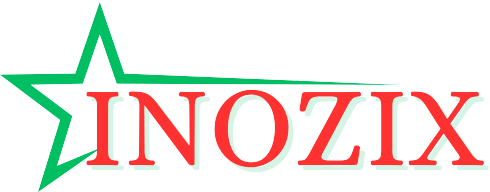Shielding Your Linux Servers in the Cloud: Top Security Measures for a Fortified Environment
nnnn
Introduction:
nnnnThe migration of Linux servers to the cloud has transformed the way businesses operate. With the agility, scalability, and cost-efficiency offered by cloud platforms like AWS, Azure, and Google Cloud, Linux-based systems have become the backbone of countless digital services. However, this transition also brings a host of security challenges. In this comprehensive guide, we will explore the essential security measures to protect your Linux servers in the cloud environment.
nnnnTable of Contents:
nnnn- n
- Understanding the Cloud Landscapen
- n
- The Shift to Cloud Computing nnnn
- Security in the Cloud: Shared Responsibility Model n
nnnn - Linux Servers in the Cloud: Vulnerabilities and Risksn
- n
- Common Threats to Linux Servers nnnn
- Risks Associated with Cloud Environments n
nnnn - Foundations of Linux Server Securityn
- n
- Secure Server Provisioning nnnn
- Minimalist Installations nnnn
- Regular Software Updates n
nnnn - User Access Managementn
- n
- Strong Authentication and Authorization nnnn
- Implementing Role-Based Access Control (RBAC) nnnn
- Enforcing the Principle of Least Privilege (PoLP) n
nnnn - Network Securityn
- n
- VPC and Subnet Design nnnn
- Firewall Configuration nnnn
- Monitoring Network Traffic n
nnnn - Data Encryptionn
- n
- Encrypting Data at Rest and in Transit nnnn
- Leveraging SSL/TLS Certificates nnnn
- Using SSH Keys for Secure Access n
nnnn - Intrusion Detection and Preventionn
- n
- Installing IDS/IPS Systems nnnn
- Analyzing and Responding to Anomalies nnnn
- Implementing Security Information and Event Management (SIEM) n
nnnn - Regular Backups and Disaster Recoveryn
- n
- Automated Backup Strategies nnnn
- Disaster Recovery Planning nnnn
- Testing Backup and Recovery Procedures n
nnnn - Security Patch Managementn
- n
- The Importance of Timely Patching nnnn
- Patch Management Best Practices nnnn
- Vulnerability Scanning n
nnnn - Container and Application Securityn
- n
- Securing Containerized Applications nnnn
- Scanning Container Images nnnn
- Secure Coding Practices n
nnnn - Logging and Monitoringn
- n
- Comprehensive Logging nnnn
- Real-time Monitoring nnnn
- Automated Alerting n
nnnn - Incident Response and Forensicsn
- n
- Developing an Incident Response Plan nnnn
- Digital Forensics in the Cloud nnnn
- Post-Incident Analysis and Remediation n
nnnn - Security Compliance and Auditingn
- n
- Regulatory Compliance nnnn
- Cloud Provider Auditing Tools nnnn
- Third-party Auditing Services n
nnnn - Third-party Security Tools and Servicesn
- n
- Antivirus and Anti-malware Solutions nnnn
- Web Application Firewalls (WAFs) nnnn
- Cloud-specific Security Services n
nnnn - Employee Training and Security Culturen
- n
- Security Awareness Training nnnn
- Creating a Security-Aware Culture nnnn
- Insider Threat Mitigation n
nnnn - Continuous Improvement and Adaptationn
- n
- Security Assessment and Evaluation nnnn
- Periodic Security Audits nnnn
- Staying Informed About Emerging Threats n
nnnn - Conclusion: Elevating Your Linux Server Security in the Cloud n
Understanding the Cloud Landscape:
nnnnWe’ll begin by examining the current cloud computing landscape and the shared responsibility model. This model defines the division of security responsibilities between cloud providers and users, setting the stage for our security measures.
nnnnLinux Servers in the Cloud: Vulnerabilities and Risks:
nnnnUnderstanding the threats and vulnerabilities specific to Linux servers in the cloud is crucial. We’ll explore common risks and their potential impact on your cloud-based infrastructure.
nnnnFoundations of Linux Server Security:
nnnnTo build a secure environment, we’ll discuss foundational security practices, including server provisioning, minimalist installations, and the importance of regular software updates.
nnnnUser Access Management:
nnnnUser access control is a cornerstone of server security. We’ll delve into the best practices for managing user access, enforcing strong authentication, and practicing the principle of least privilege.
nnnnNetwork Security:
nnnnSecuring your cloud network is paramount. We’ll cover topics like Virtual Private Cloud (VPC) design, firewall configuration, and network traffic monitoring.
nnnnData Encryption:
nnnnProtecting data is non-negotiable. We’ll explore encryption techniques for data at rest and in transit, utilizing SSL/TLS certificates, and SSH keys for secure access.
nnnnIntrusion Detection and Prevention:
nnnnDetecting and preventing intrusions is crucial. We’ll discuss the installation of Intrusion Detection Systems (IDS) and Intrusion Prevention Systems (IPS), as well as Security Information and Event Management (SIEM) solutions.
nnnnRegular Backups and Disaster Recovery:
nnnnPreparing for the worst-case scenario is essential. We’ll guide you through automated backup strategies, disaster recovery planning, and the importance of testing your procedures.
nnnnSecurity Patch Management:
nnnnKeeping your Linux servers up-to-date is vital. We’ll explore patch management best practices, vulnerability scanning, and the importance of timely patching.
nnnnContainer and Application Security:
nnnnContainerization is prevalent in the cloud. We’ll examine best practices for securing containerized applications and leveraging secure coding practices.
nnnnLogging and Monitoring:
nnnnComprehensive logging and real-time monitoring are essential for threat detection. We’ll discuss how to set up effective logging and monitoring systems.
nnnnIncident Response and Forensics:
nnnnInevitably, incidents will occur. We’ll guide you through incident response planning, digital forensics in the cloud, and post-incident analysis.
nnnnSecurity Compliance and Auditing:
nnnnMany industries have compliance requirements. We’ll touch on regulatory compliance, cloud provider auditing tools, and third-party auditing services.
nnnnThird-party Security Tools and Services:
nnnnEnhance your security posture with third-party tools and services like antivirus solutions, Web Application Firewalls (WAFs), and cloud-specific security services.
nnnnEmployee Training and Security Culture:
nnnnYour team plays a significant role in security. We’ll discuss security awareness training, creating a security-aware culture, and mitigating insider threats.
nnnnContinuous Improvement and Adaptation:
nnnnFinally, we’ll emphasize the importance of continuous improvement through security assessments, periodic audits, and staying informed about emerging threats.
nnnnConclusion: Elevating Your Linux Server Security in the Cloud:
nnnnIn the conclusion, we’ll recap the key takeaways and highlight the critical role that robust security measures play in safeguarding your Linux servers in the cloud. By implementing these security measures, you can navigate the complex cloud landscape with confidence, knowing that your Linux servers are fortified against a multitude of threats.
n